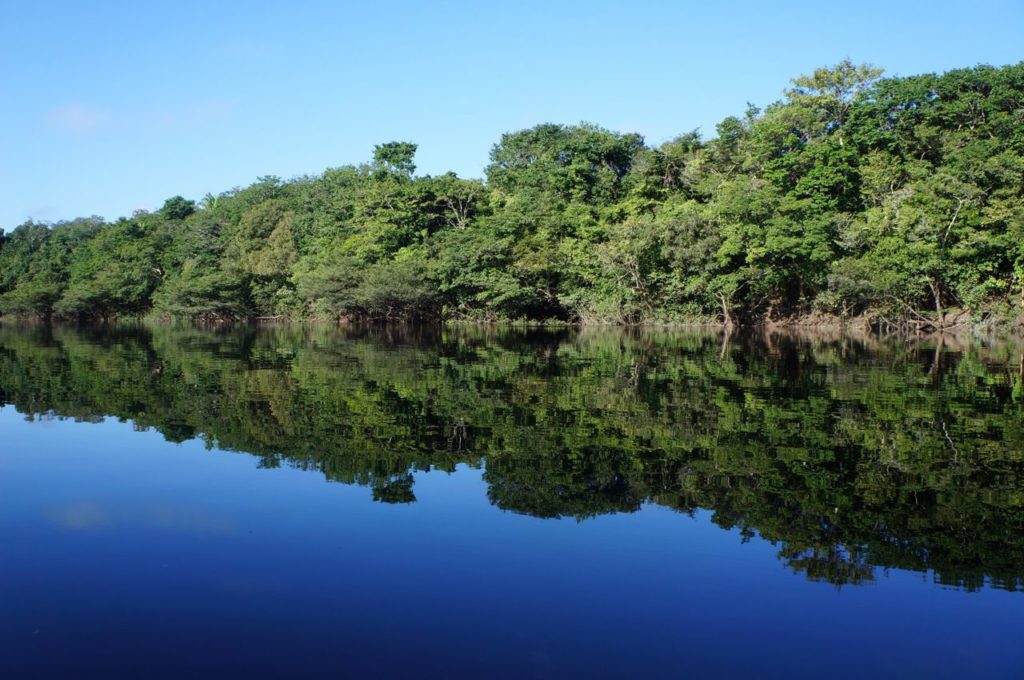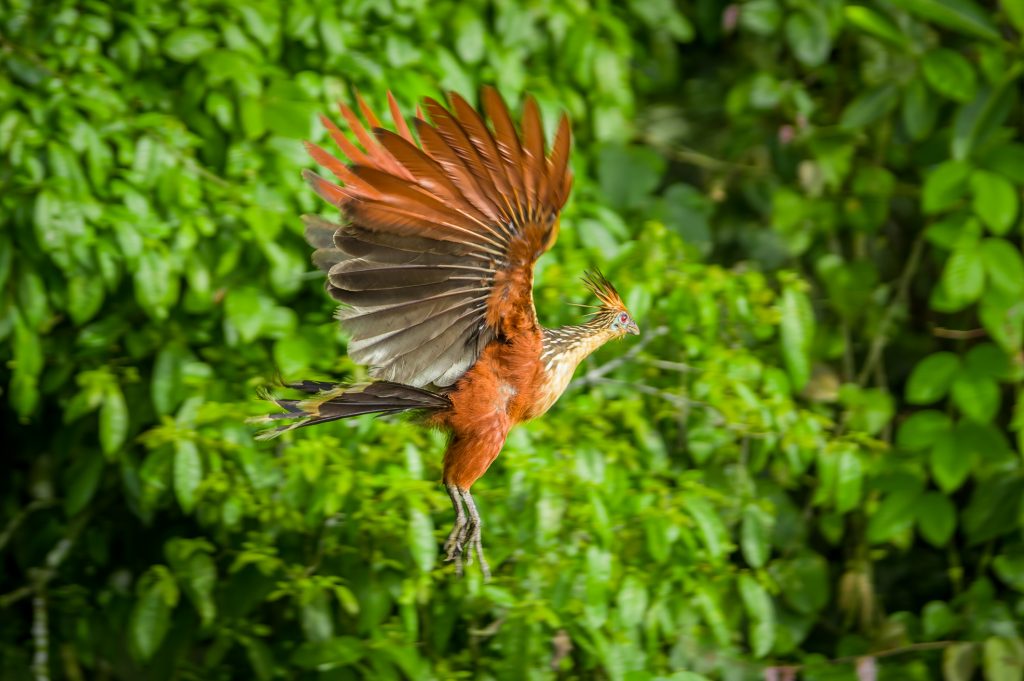8 Interesting Facts about the Amazon Rainforest
ABOUT
At Our Whole Village, we plan meaningful vacations for families who want to create lifelong memories and show their kids the world in a more conscious and intentional manner.
WORK WITH US
We help families take meaningful vacations so that they can escape everyday life, show their kids the world and make lifelong memories - with care, confidence and peace of mind.
THE BEST FAMILY VACATIONS BY AGE
Your (free) guide to the top travel destinations for families with babies, teens and everyone in between.
DOWNLOAD NOW
ABOUT US
April 5, 2019
A vast region of more than 2.6 million square miles of dense forests, the Amazon spans across the South American nations of Bolivia, Brazil, Colombia, Ecuador, Guyana, French Guiana, Peru, Suriname, and Venezuela. Encompassing about 40 percent of South America, the Amazon basin approximates the size of the contiguous United States.
Ready for more interesting facts about the Amazon rainforest? Let’s see how many of these you already know.
1. A Contested Record
Traditionally, the Amazon River has been ranked the second longest river in the world after the Nile in Africa. But this remains a contested record. Actually, the debate involves the true source and length of the Amazon. Depending on which source you go with, the length changes. While the US Geological Survey lists its length at 4,000 miles (6,437 kilometers), other surveys place it at 4,345 miles (6,992 kilometers) in length. Since the Nile River measures 4,258 miles (6,852 kilometers), the second figure makes the Amazon the longest river in the world.

2. The River that Looks Like an Ocean
During the dry season, the Amazon River varies in width by two to more than six miles. But the rainy season brings torrents of precipitation. These cause the river to swell upwards of more than 24.8 miles (40 kilometers) in some places. Where the river opens to its estuary and meets the Atlantic Ocean, it stretches more than 202 miles (325 kilometers) across, giving it the appearance of an ocean rather than a river.
3. That’s Some Rainy Season!
During the wet season (from mid-December to mid-May), the Amazon gets on average nine feet (2.75 meters) of rain each year. As a result, the river swells 30 to 45 feet (9.14 to 13.72 meters) above its dry season levels. The volume of water the Amazon empties into the Atlantic Ocean also increases from about 7,400,000 cubic feet per second to 11,000,000 cubic feet per second.

4. Mythic Roots
In 1542, Francisco de Orellana became the first Spanish explorer to navigate the entire length of the Amazon River. On a quest for precious metals, Orellana also proved curious about local tales of female warriors. In one instance, he and his crew even faced off against a group of natives that included female fighters. These stories and his personal encounter led him to conclude that they’d stumbled upon the land of the Amazons, the mythic female warriors of Greek mythology. (Think Wonder Woman.) Although Orellana’s hypothesis proved faulty, the name stuck. Besides the Amazon River and the Amazon basin, the rainforests of this region are referred to as Amazonia.
5. The Swim of a Lifetime
Slovenian long-distance swimmer Martin Strel takes his love of rivers to the extreme. This Guinness World Record holder has swum the entire length of many famous rivers around the world including the Danube, the Mississippi, the Yangtze, and even the Amazon. Swimming the entire length of the Amazon took 66 days. Each day, he averaged 52 miles, requiring up to 10 hours of swimming per day.
6. The Land of Jaguars
The Amazon rainforest provides one of the last known refuges for jaguars. Due to illegal hunting and habitat destruction, the big cat’s numbers are now thought to hover around 6,000 individuals. Extremely elusive, jaguars are nocturnal and rarely seen during the day, although the best place to see them remains Brazil. Well adapted to their rainforest home, jaguars prove expert swimmers, climbers, and hunters. These beautiful creatures were personified in some Native American cultures by the formidable lord of the underworld, the Jaguar God of the Night.
7. Iconic Fish
What do you think of when you hear the word piranha? Although these toothy fish have been depicted as vicious and deadly in pop culture, the reality is really quite tame. Piranhas are omnivores who only resort to eating meat when the opportunity arises. Downright pretty fish, they have red-orange bellies and average between 5.5 and 10.25 inches in length. Instead of being the aggressive killers portrayed in B-rated movies, piranhas prove timid and school together for protection. Don’t believe us? Just ask Martin Strel who came away bite-free from his Amazon River swim.
8. Extreme Biodiversity
The Amazon basin’s biodiversity proves truly stunning. This rich ecosystem contains around 40,000 plant species, 3,000 fish species, 1,300 bird species, and 430 different types of mammals. What’s more, scientists have identified over 2.5 million different species of insects. All told, the Amazon basin contains 10 percent of the world’s known biodiversity. And new species continue to be discovered. From 1999 to 2009 alone, 1,200 new species were identified in the Amazon, including a four-meter-long anaconda and a pink frog the size of a coin. Find out more about how to preserve the natural wonders of the rainforest with this ultimate guide to deforestation.

Interesting Facts About the Amazon Rainforest
Did any of these interesting facts about the Amazon rainforest surprise you? Are you ready for your own Amazon family adventure?
Check out our 7-day Brazilian Amazon Cruise, an immersive, authentic way to visit some of the most extraordinary destinations in Brazil with kids.
At Our Whole Village, we create transformational trips for curious families who want to create lasting memories while making a difference. We’re here to help you and your family experience the world, its peoples, and its cultures. Contact us today to learn more about the unforgettable experiences that we handcraft for curious families just like yours.
OUR SERVICES
HOME
COPYRIGHT © OUR WHOLE VILLAGE 2021
DESIGN BY GIRLBOSS DESIGNER | CUSTOMIZED BY ALEX COLLIER DESIGN
about
TRAVEL SERVICES
DESTINATIONS
BLOG
PLAN A TRIP
FREE TRAVEL GUIDE
TERMS AND CONDITIONS
hello@ourwholevillage.com
+1 305 432 2612